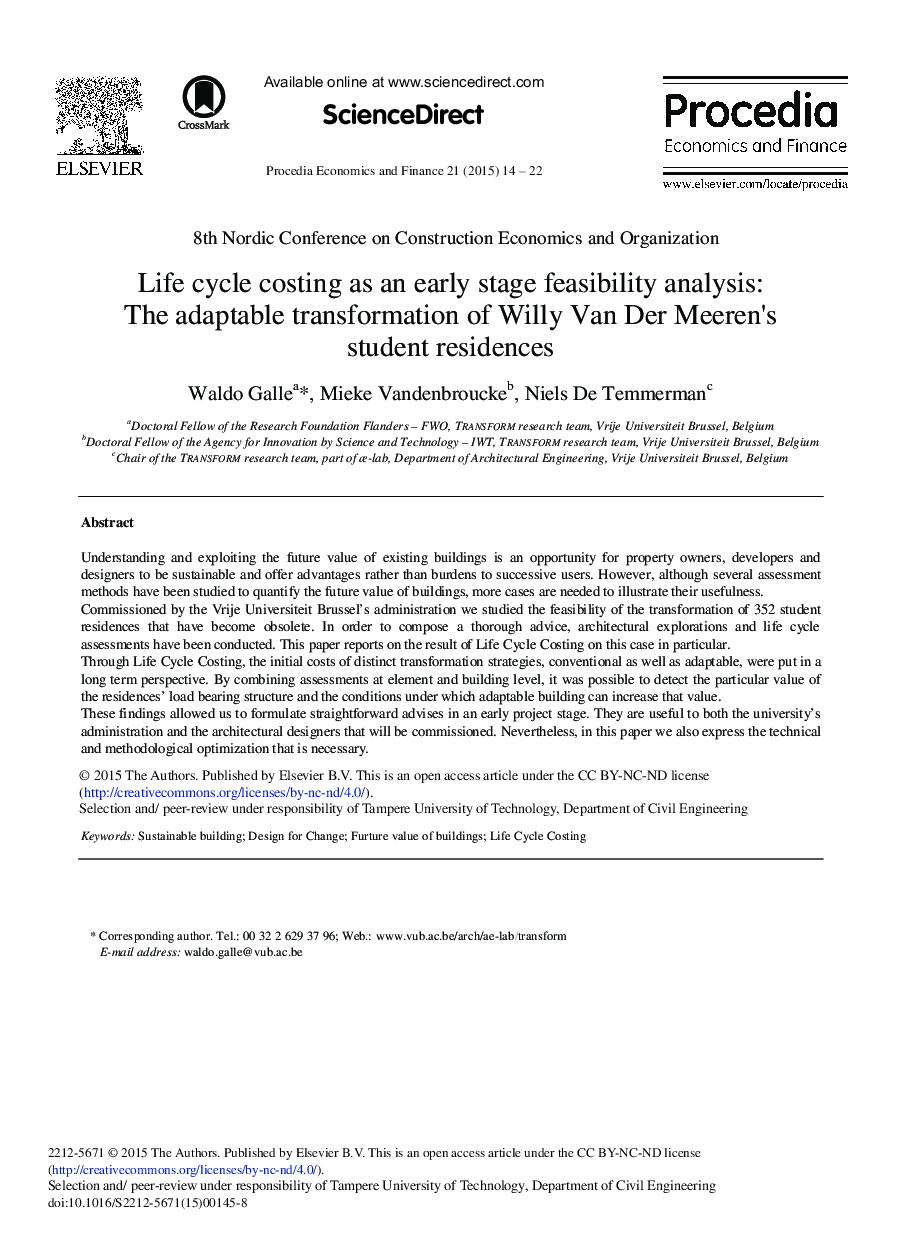| Article ID | Journal | Published Year | Pages | File Type |
|---|---|---|---|---|
| 980042 | Procedia Economics and Finance | 2015 | 9 Pages |
Understanding and exploiting the future value of existing buildings is an opportunity for property owners, developers and designers to be sustainable and offer advantages rather than burdens to successiveusers. However, although several assessment methods have been studied to quantifythe future value of buildings, more cases are needed to illustrate their usefulness.Commissioned by theVrijeUniversiteit Brussel's administration we studied the feasibility of the transformation of 352 student residences that have become obsolete. In order to compose a thorough advice, architectural explorations and life cycle assessments have been conducted. This paper reports on the result of Life Cycle Costingon this case in particular.Through Life Cycle Costing, the initial costs of distinct transformation strategies, conventional as well as adaptable, were put in a long term perspective.By combining assessments at element and building level,it was possible to detect the particular value of the residences’ load bearing structure and the conditions under which adaptable building can increase that value.These findings allowed us to formulate straightforward advises in an early project stage. They are useful to both the university's administration and the architectural designers that will be commissioned. Nevertheless, in this paper we alsoexpressthe technical and methodological optimizationthat is necessary.
